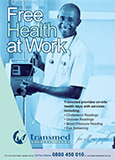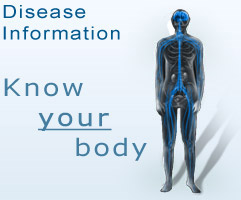Breastfeeding
THE BENEFITS OF BREASTFEEDING
For baby
- A mother's milk has just the right amount of fat, sugar, water and protein that is required for her baby's growth and development. Most babies find it easier to digest breast milk than formula.
- Breast milk also has agents (called antibodies) to help protect infants from bacteria and viruses and to help them fight off infection and disease.
- Breast milk is sterile.
- Premature babies especially, are encouraged to be breastfed as they gain more weight than babies who are on formula.
- Exclusive breastfeeding (meaning no solid food, formula, or water) for at least six months seems to offer the most protection.
- Breastfeeding's protection against illness lasts beyond your baby's breastfeeding stage, too.
- Breastfeeding may also help children avoid a host of diseases that strike later in life, such as type I and type II diabetes, high cholesterol, and inflammatory bowel disease.
- Breastfeeding can protect your baby from developing allergies
For mom
Breastfeeding has many benefits for the mother too, as it:
- helps the mother to bond with her baby as physical contact is important to newborns to help them feel secure, warm and comforted;
- burns up extra calories, making it easier to lose the weight gained during pregnancy;
- helps the uterus to return to its original size more quickly and reduces any bleeding you may have after birth;
- may lower the risk of breast and ovarian cancers; and
- saves time and money as you don't have to purchase, measure and mix formula, and there are no milk bottles that you need to keep warm.
How to start breastfeeding
The first time you hold your newborn in the delivery room, place his/her lips to your breast. Your milk will initially appear yellowish in colour and flow sporadically, but will become white after a few days and flow uninterrupted. The yellowish milk is called colostrum and will help protect your baby from infection as it contains all the proteins, vitamins and minerals your baby needs. It also acts as a gentle laxative, helping to clear the sticky, dark brown-black meconium from the baby's intestines.
There is no need to panic if your newborn seems to have trouble finding or ‘latching' on to your breast. Breastfeeding requires patience and lots of practice and you are not expected to be an expert from the beginning. Don't hesitate to ask a nurse to show you what to do while you're in the hospital. If you have a premature baby, you may not be able to breastfeed right away, but you should start pumping your milk. Your baby will receive this milk through a tube or a bottle until he/she is strong enough to breastfeed.
Once you get started, remember that breastfeeding shouldn't be a painful experience. Pay attention to how your breasts feel once your baby latches on. The baby's mouth should cover a big part of the areola around the nipple, and your nipple should be far back in your baby's mouth. If latching on hurts, break the suction by inserting your little finger between your baby's gums and your nipple; then try again. Once your baby latches on properly, the rest will come naturally.
How often you should breastfeed
The more frequently you breastfeed, the more quickly your mature milk will come and you'll produce more milk too. Breastfeeding for 15 minutes per breast for eight to 12 times every 24 hours is sufficient. According to the latest guidelines from the American Academy of Paediatrics (AAP), you should breastfeed whenever your baby shows signs of hunger, such as increased alertness or activity, mouthing, or rooting around for your nipple. By the time the baby is crying, this is a late sign of hunger, which means that you should ideally start breastfeeding before your baby starts crying.
Make yourself comfortable
Since breastfeeding can take up to 40 minutes at a time, pick a cosy spot to sit or lay back. Hold your baby in such a position that your arms and back don't ache. You could support the back of your baby's head with your hand, but the position you choose should depend on what's most comfortable for you. If you're sitting, a nursing pillow can assist you in supporting your baby. Don't start breastfeeding until you and your baby are comfortable because you'll be sitting (or lying) in that position for a while.
What to eat
A normal healthy diet is all you need while breastfeeding. Experts used to recommend that breastfeeding moms get an extra 400 to 500 calories a day. However, new research shows that you don't need that calorie boost, according to Kathleen Huggins, author of ‘The Nursing Mother's Companion'. You need to maintain a well-balanced diet for your own health, but you don't need to follow complicated dietary rules to successfully breastfeed your baby.
You may want to limit caffeine, avoid chocolate and spicy foods, and other irritants that may affect your baby via your breast milk. Be sure to drink lots of fluids.
Remember that although breastfeeding is natural, it can be difficult in the first days. Ask a breastfeeding consultant or friends who have breastfed their children for encouragement and advice, as their support and tips will be invaluable.
Problems you may encounter
Although mothers have been breastfeeding their babies for centuries, it isn't always easy. Many women face some difficulties early on. Some of the most common problems you may encounter in the first six weeks include:
- engorgement, which is an overfull breast;
- sore nipples; and
- mastitis, a breast infection.
Don't suffer in silence. Call a breast feeding consultant or your doctor (especially if you think you may have a breast infection) if your physical discomfort interferes with your breastfeeding.
References
1. BABY CENTER. Website: http://www.babycenter.com/0_breastfeeding-getting-started_465.bc?page=2
2. WOMENSHEALTH. Website: http://www.womenshealth.gov/breastfeeding/index.cfm? page=home
 TransmedBanner4.jpg)

